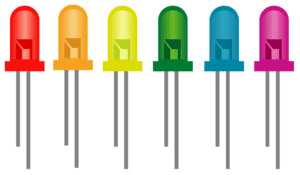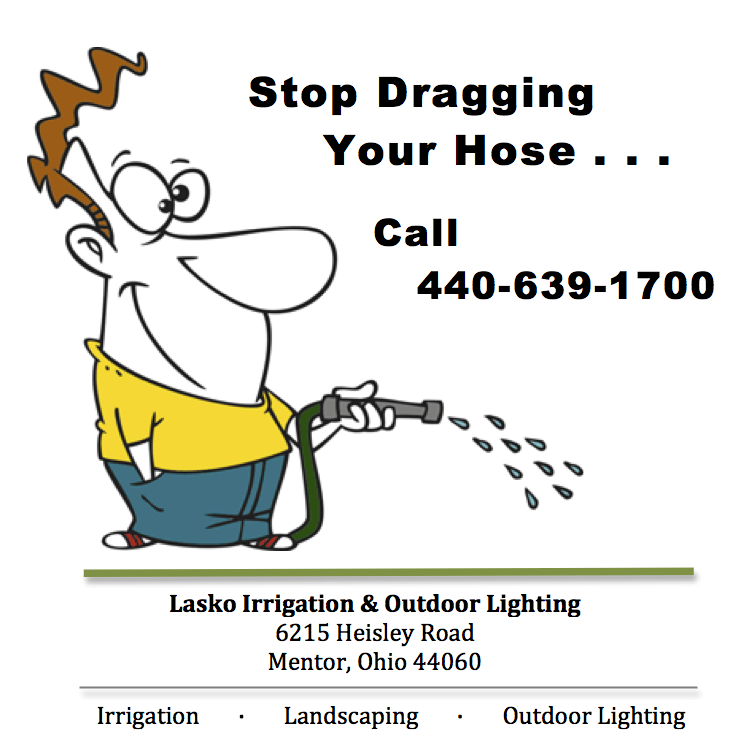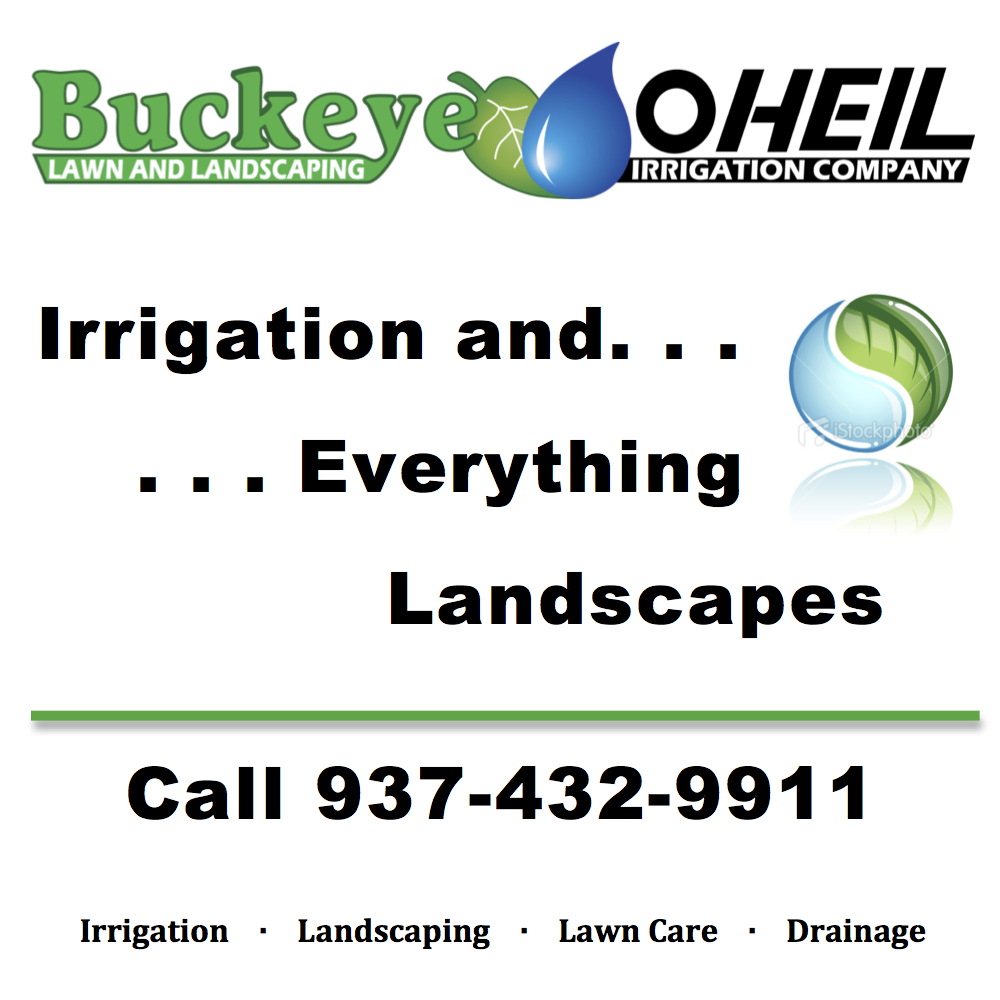
by Tom Barrett | Feb 8, 2023
The Most Eco-Friendly Way to Control Pests
in Your Customer’s Landscape
If your irrigation business also provides landscaping services, now’s the time of year to think about controlling spring pests. Grubs, billbugs, and dandelion seeds lurk beneath the snow, waiting to attack as soon as the first green appears.
Integrated pest management (IPM) is an effective and sustainable approach to pest control that employs a variety of techniques for managing common lawn and garden pests. It’s an eco-friendly alternative that can help prevent infestation from occurring.
IPM was first developed for large-scale agricultural operations, but its basic tenets also apply to residential landscapes. It incorporates an understanding of plant biology, insect pests, and plant diseases, taking into consideration a landscape’s entire ecosystem – not just a segment.
IPM Control Strategies
IPM involves four general control strategies: cultural control, physical control, biological control, and chemical control. Each of these strategies should utilize natural solutions for the least-disruptive pest management measure possible.

Not a Landscaper?
If your irrigation business does not provide landscaping services, you may wonder why IPM matters to you. The fact is, poor irrigation practices can sabotage your customer’s IPM strategy, significantly increasing the likelihood of lawn and garden pests, particularly:
- Leaf spot and other fungal diseases
- White grubs, spittlebugs, and garden slugs due to overwatering
- Sod webworms, bluegrass billbugs, and spider mites due to under watering.
In addition, customers who employ IPM techniques will benefit greatly from a periodic irrigation audit to ensure maximum effectiveness.
Cultural Control
Cultural control measures modify natural environment to reduce the potential for pest problems. An example would be removing old plant material, infested plants, and weeds that may harbor pests.
Optimizing plant health is another cultural control method. This would include proper irrigation, fertilization and pruning to reduce plant stress. Two of the most effective cultural controls are selecting native plants (which are naturally resistant to native pests) and hydrozoning.
Physical Control
Physical controls are activities that physically remove or block a pest from your customer’s landscape. These controls are most effective when pest populations are low. Examples of physical controls include spraying plants with water to dislodge pests, installing barriers such as row covers or nets, setting insect traps, and hand-pulling weeds.
Physical controls can also be employed for pests that build nests or feed together. For instance, pruning out web-infested branches can reduce pest populations and damage.
Biological Control
Biological control involves using a pest’s natural enemies (e.g., beneficial insects) to reduce pest numbers. There are two different kinds of biological control: conservation and augmentative.
In conservation biological control the landscaper provides the resources needed to attract and keep a pest’s natural enemies within the landscape. Such resources might include nectar and pollen, alternative prey, water, and nesting sites.
For augmentative biological control the landscaper releases the pest’s natural enemies directly into the environment. Lady bugs and praying mantises are popular choices for this purpose. For weed management, the seedhead and rosette weevils have proven to be effective biological controls.
—Article Continues Below—

Chemical Control
Chemical control is used in IPM only as a short-term solution and only after all other options have been explored. There’s a reason for this: pesticides or herbicides can often do more harm than good. For example, pesticides can kill natural enemies along with the pest, causing pest populations to rebound more quickly than their natural enemies do. The result can be a “pesticide treadmill,” where you’re always trying to stay one step ahead of the pests.
When utilizing chemical control measures, be sure to choose “selective” insecticides and herbicides that are less persistent in the environment and affect only the targeted pest. By leaving natural enemies in place you’ll help control more pests in the long term.
Additional Tips
The National Pesticide Information Center recommends these additional IPM Techniques to prevent future pest problems and reduce the long-term need for pesticides:

IPM Standards in Ohio
Ohio companies that offer IPM services must meet governmental standards as established in the Ohio Administrative Code. These standards apply to all pest control, landscaping or lawn care companies operating within the state.
Under Ohio law, every non-agricultural IPM program must include the following four elements:
- A comprehensive site assessment
- A needs assessment and comprehensive plan for pest control
- A schedule for ongoing pest monitoring and site reassessment
- An evaluation of the IPM plan results
Details for completing each of these necessary steps can be found at the Ohio State Pesticide Safety Education Program.
- Irrigate at ground level wherever possible; wet leaves are more susceptible to disease.
- Dead plant material can harbor disease; be sure to remove it before spring.
- Determine fertilizer needs by testing the soil for nutrients and minerals.
- Inspect plants regularly to detect problems early.
- Contact your local university extension for help identifying and managing pests.
Ready to Expand Your Menu?
If you want to include integrated pest management in your menu of landscaping services, bear in mind that you’ll need to make two to three additional site visits per season, depending on environmental conditions. A successful IPM program requires that the contractor examine the overall health of the turf, trees and ornamental plants on each property. You’ll need to assess weed infiltration and identify signs of pest damage, or any other harbinger of larger plant problems.
Also, be sure to determine your customer’s tolerance for imperfection. Integrated pest management will not eradicate every weed and insect pest from a landscape, but it will keep them below damaging levels. So if your client is seeking an insect-free lawn and garden, he may be dissatisfied.
It’s important for contractors and clients to have a frank conversation so they can establish threshold levels and set realistic expectations.
Sources:
Featured Image: Adobe, License Granted
Purdue University Extension
National Pesticide Information Center
Ohio State University Extension

by Tom Barrett | Jan 11, 2023
Irrigation Companies Still
Struggling to Find Qualified Staff
Is your irrigation business reeling from the labor shortage? If so, you’re not alone.
Although the green industry has faced a significant labor deficit for many years, the pandemic resulted in a “double whammy” for landscape and irrigation contractors: surplus demand for services and record-breaking worker shortages.
Labor Pains
Here are just a few of the stories irrigation business owners tell regarding their labor woes and what they’re doing to alleviate the situation:

Looking for
Qualified Workers?
In addition to posting available positions on the Irrigation Association’s Careers Center page, check out the following Ohio colleges and universities listed in the IA’s Schools Directory:
Cincinnati State Technical and Community College — Register as an employer through CareerLink.
University of Cincinnati – Post jobs through the Handshake network.
Columbus State Community College – Post jobs through the Handshake network.
Ohio State University College of Food, Agriculture & Environmental Sciences – Post jobs through the Handshake network.
Cayahoga Community College (Cleveland) – Post jobs through the Handshake network.
Hocking College (Nelsonville) – Submit job description to Terry Koons, Career Center Services Manager, koonst@hocking.edu.
Owens Community College (Perrysburg) – Register as an employer through the College Central network.
Kent State University (Salem) – Post jobs through the Handshake network
Clark State Community College (Springfield) — Register as an employer through the College Central network.
You can also register as an employer with Ohio Means Jobs.
A Big Carrot
John Lane owns Castle Rock Sprinkler Service in Denver. He would love to hire three or four more irrigation techs because the demand is so high, “but I just can’t find them,” he said.
Lane even went so far as to offer $30 per hour and a signing bonus. Still, he’s had no takers. The few who did inquire about the job failed to show up for the interview.
Worst of all, Lane said, applicants claim to have experience when they don’t. So now he’s offered to pay applicants $250 a day for them to accompany him to a job site to see what they know. He’s also prepared to train applicants with at least some mechanical ability.
Working Smarter
Lester Anders, owner of Nature’s Link in Bloomington, Ind., struggles to find younger workers. He has a core group of employees who have been with him for 15 or 20 years, but now they’re starting to retire, and he has more work than ever.
To compensate for the labor shortage, Anders trains his crews to work smarter, not harder. For instance, they utilize as much equipment as possible (replacing a third worker on each team).
Anders said that if he can’t attract younger workers, he must learn to work more efficiently.
Commissioning Help
Ryan Jantz is the general manager for Arizona-based Sorona Sprinkler.
To attract and keep qualified technicians, he now offers 30% commission-based pay. It’s worked out well for him and his 12 techs.
His workers have begun “thinking on their feet” and developing new ideas to generate revenue. They’re much more motivated to upsell products and services, Jantz said.
“You know how crazy our industry has been? We’re doing a 300% increase in business with 50% of the staff we used to have.”
Kathy Wheaton
Owner, Kathy’s Corner
Vashon Island, Wash.
Survey Says…
AmericanHort, in collaboration with researchers at the University of California-Davis and the University of Michigan, conducted a survey in 2022 to help understand the depth of the labor scarcity impacting the green industry.
The following infographic illustrates key survey findings:

Help from Uncle Sam
In an effort to address the green industry labor shortage, the Department of Homeland Security has released more than 64,000 additional H-2B visas for fiscal year 2023. The H-2B visa program allows temporary admission of foreign workers to perform seasonal non-agricultural labor whenever unemployed U.S. workers are not available.
According to Nathan Bowen, the Irrigation Association’s advocacy director, expanding the overall labor pool will likely benefit the entire industry. Participants in the H2-B visa program benefit directly, while nonparticipants benefit indirectly because of reduced competition in the labor market.
For information, resources and assistance with the H2-B program, contact Andrew Bray, at the National Association of Landscape Professionals (NALP).
On-the-Job Training
More than ever, on-the-job training opportunities are critical if employers hope to attract and retain good workers. Increasingly, irrigation contractors are realizing that finding workers with years of experience is less likely (or important) than finding trainable people with shared values, including a strong work ethic and the desire to work outdoors.
Should You Offer Apprenticeships?
Another way landscape professionals are combating the labor shortage is by offering apprenticeships.
The National Association of Landscape Professionals (NALP) developed its apprenticeship program to help establish landscaping and irrigation as a skilled trade.
Interested companies must be in business for at least one year. NALP members pay a $500 enrollment fee ($1,000 for non-members) and a $100 per-apprentice fee ($200 for non-members). Optional training per apprentice is $737 for three online courses ($921 for non-members).
Apprentices who fail to complete the program within two years must pay an annual $50 holdover fee.
Click here for more information.
The Irrigation Association offers various online classes for every skill level, from basic hydraulics to complex irrigation system design. There’s even a beginner-level “Pipes, Fittings & Assembly” course available in Spanish (pdf format).
When training a group with a wide range of skill sets, it’s often helpful if the more advanced learners share their experiences and mentor the new hires. This is also an excellent way to measure the senior techs’ expertise.
Be sure to follow up classroom or online training with hands-on practice or implementation of the newly learned skills. Finally, have some type of evaluation in place to ensure your techs have retained the new information.
Sources:
Featured Images: Adobe, License Granted
Landscape Management
National Association of Workforce Boards
Lawn & Landscape
Irrigation & Lighting
AmericanHort

by Tom Barrett | Nov 9, 2022
Installing Holiday Lights Can Be a
Nice Bonus for Your Business
Irrigation and residential landscape contractors seeking an additional revenue stream during these colder months need look no further than holiday lighting installation.
Not only does holiday lighting provide a welcome profit, but it’s also a great way to keep your best workers employed during the off-season. It’s like a holiday bonus for your business.
Clientele typically include busy families with no time to spare during the holiday season, older couples whose light-hanging days are over, and (particularly) high-income households with large estate homes.
Here are a few ideas for getting started:
First Things First
Confirm that the size and average income of your local population can sustain an installation business. Are there fewer than 50,000 residents within 30 miles of your business? Then you probably don’t have the population base needed to support your new venture. What about the average income? Most of your customers will be upper middle class or higher. If the average household income within your service area is at least $150,000 a year, you’re probably in good shape.
![]()
 How Much Should
How Much Should
I Charge?
The amount you charge customers for a holiday lighting install depends on the complexity of the design, the square footage involved, the types of lights selected, and whether lights are purchased or leased. (The price of light strands averages between $80 and $300, depending on the product.)
The installation cost for the first year is typically reduced by 50% for subsequent years. Charges include free servicing and bulb replacement throughout the season.
Here are some average installation charges, according to HomeAdvisor:

Determine if there’s a reasonable demand for holiday lighting services. How much competition will you face? Do some research to make sure your local market isn’t already saturated. Bear in mind, however, that significant competition could mean the market is hot and can support multiple installers.
Find a Partner
Affiliating your business with an established holiday lighting company offers a fast track to success through training, sales leads, and product discounts. Some manufacturers will also supply various tools to help build your business, such as a designer app that illustrates how the lights will look on a client’s home, or an estimating program.
Another option to get your new business up to speed quickly is to purchase a franchise. For the cost of a start-up fee and a yearly royalty, you can get training and support, business software, territory protection, and marketing assistance.
Franchise companies provide the blueprints for efficient, replicable systems, so there’s no need to “reinvent the wheel” on each job. Installers can complete the job quickly and move on, optimizing the short holiday window of opportunity. As a result, franchises often work best if you stick to the established program and resist the temptation to deviate.
—Article Continues Below—

Potential Pitfalls
Experts in the field caution newbies about the following potential pitfalls:
Using inferior products. Don’t cut corners by purchasing cheaper products from the local big-box stores. Instead, choose waterproof, contractor-grade lights with sturdier bulbs, thicker wires, and more reliable connectors. These products provide a warranty.
Offering too many discounts. Remember, you’re offering a premium service that your customers will expect to pay for. Also, be sure to set a minimum charge. (See sidebar above, “How Much Should I Charge?”)
Assuming you’re covered. Make sure your insurance carrier includes coverage for climbing ladders and roofs and using hydraulic cranes.
Selling It
 Storing Lights
Storing Lights
Whether you choose to sell light strands to your customers or lease them, it’s a good idea to offer off-season storage for a nominal fee. Storing your customers’ holiday lights provides two substantial benefits:
- It helps expedite next year’s installation, especially if you use labeled bins and include blueprints or other schematics, along with the necessary attachments (timers, extension cords, etc.)
- It increases the likelihood of repeat business. Why should your customers go elsewhere when you already possess everything they need?
Even though the residential holiday lighting market is strong, you’ll still need to sell your irrigation and landscaping customers on the benefits of using your holiday lighting services. Here are a few selling points worth mentioning:
- The Wow Factor – professionally installed lights look beautiful and elegant without being garish (something your neighbors will appreciate). Be sure to show your customers plenty of examples.
- Safety – When trained professionals handle the job, homeowners have no risk of injury (falling from roofs and ladders, electrical shock, or exposure to the elements).
- Convenience – Your customers can spend their holiday preparation time on more enjoyable tasks with friends and family.
- Economy and Sustainability – professional-grade LED light strands are more durable and utilize much less power.
Sources:
Featured Image: Adobe, License Granted
Irrigation & Lighting
Christmas Designers
Angi

by Tom Barrett | Oct 18, 2022
4 Tips for Retrofitting and
Upgrading Irrigation Systems
Winterization season is a great time to evaluate your customers’ irrigation systems and suggest retrofitting or upgrading outdated equipment and software for the coming year.
Irrigation technology is continually advancing as sustainability and water efficiency become increasingly important. As a result, the opportunity to enhance sales by retrofitting and upgrading current systems is huge.
Mark Your Calendar!

MidwestGREEN, OGIA’s annual signature event, is scheduled for Nov. 1-3, at the Columbus Convention Center.
For more information
and to register…

In the past, irrigation systems were upgraded only when they ceased functioning properly. Not so anymore. Today customers may want to augment their existing system with water-efficient controllers or other solutions. They’re seeking out smart controllers and nozzles that use less water and prevent runoff. And they want the convenience of mobile connectivity.
4 Tips to Consider
Here are four tips to consider before embarking on an irrigation system upgrade or retrofit:
#1. Familiarize Yourself with the Currently Installed System
Gather as much information as possible from the homeowner regarding the current system. Determine how old the system is and learn about its efficiency and history.
The simplest way to do this is to review the service calls, noting the required repair type (pipe break, broken sprinkler, bad solenoid, etc.). This information will help you identify trends.
#2. Identify If the System Needs an Upgrade or a Retrofit
Is the intention to improve the existing system’s performance (upgrade) or completely replace it (retrofit)? Retrofitting involves both software and hardware modifications, while upgrading focuses solely on software improvements. Knowing this will help you ascertain the level of difficulty the project will entail and the best options for a successful upgrade or retrofit.

Need Winterization Tips?
For a complete guide to winterizing irrigation systems, check out these past articles:
For instance, a maturing landscape may interfere with the system’s water distribution. (This is especially true for drip irrigation systems.) You may need to relocate the sprinklers or even install a different type of system altogether. On the other hand, the mature landscape may just require more water; upgrading the controller’s software may be all that’s needed to improve distribution and efficiency.
#3. Determine Budget Constraints
Identify the priorities based on the homeowner’s budget. Your preferred supplier can offer cost-effective upgrades that won’t break the bank. On the other hand, systems that require a complete overhaul can be expensive. If the homeowner does not have the cash on hand for such an expense, financing is a great option. (See sidebar below, “Customer Financing Benefits.”)
#4. Consider How It All Fits Together
How does it all fit together? Are the existing hydraulics powerful enough to water everything in the allotted time? Are the rotor zones using matched precipitation rate nozzles? It’s an easy change and will greatly improve the system uniformity. Additionally, in older systems, nozzles can wear out. This is usually indicated when the water stream from the nozzle is ragged and rough. A worn nozzle will also experience a radius reduction.
–Article Continues Below–

How far are your upgrades from the controller? More than 1,100 feet and you may need to run more electrical. Lastly, consider how your customer will be connecting to the controller. Is it through ethernet, cellular, or Wi-Fi? While ethernet is faster and more dependable, Wi-Fi and cellular offer mobile control.
Products for Irrigation Retrofits
Here are a few products and equipment that have retrofit capabilities.
Tucor Hybrid 3D
The Tucor Hybrid 3D is a simple plug-and-play device that allows you to add a master valve, flow sensor, and 1-24 new valves to any irrigation controller using existing wires. It can also convert a conventional controller to a Tucor 2-Wire decoder system. No need to run additional control or communication wires and cables in order to expand the existing system.
Rain Bird Spray-to-Drip Retrofit Kit

Customer Financing Benefits
If your irrigation business is not yet offering customer financing, here are a few reasons to consider it:
- Accelerates the Sales Process. Offering flexible financing at the point of sale minimizes pricing objections and helps close deals faster.
- Increases Customer Retention. Helping your customer manage his budget and cash flow will create a strong connection that can lead to the next sale.
- Delivers a Great Customer Experience. Leveraging customer financing lets you eliminate the sting of sticker shock and shift the conversation away from budget constraints to the value an upgraded irrigation system provides.
- Gives Your Business an Edge. Offering customer financing can give you a competitive edge, allowing smaller businesses to compete with larger ones.
- Attracts New Customers. Research indicates that the top-performing home improvement contractors offer customer financing. Prospective customers shopping around for an irrigation contractor may be more likely to choose one offering financing options.
Source: DLL Group
This simple kit easily converts each sprinkler head into a 6-port drip emitter watering system. The 1800 Retro internal assembly is easily installed into any existing Rain Bird 1804 spray head bodies to retrofit the current system to Xerigation® products.
Kit includes three) 1 GPH and three 2 GPH drip emitters to allow flow variation, fine mesh filter, 30 PSI pressure regulator, and manifold that connects to 1/4 in. tubing.
Hunter MP Rotators
Hunter’s MP Rotators apply water using heavy droplet streams at a matched precipitation rate. The slower application rate allows water to soak into the soil gently and achieves an even distribution throughout the irrigated area. The MP Rotator can replace the sprinkler head on any conventional spray head body or shrub adapter.
Hunter HCC Retrofit Kit for ICC & ICC2
Hunter also offers a Retrofit Upgrade Kit for its ICC and ICC2 controllers. This kit contains everything needed to upgrade to wifi control using the Hydrawise software — essentially converting the ICC controller to the new HCC controller — including a 3.2″ full-color touchscreen display for Wi-Fi setup, zone testing, and offline programming at the control panel. The Hydawwise software provides easy contractor access to the system via any smartphone.
Baseline Systems BaseStation 3200™
The BaseStation 3200™ supports Baseline’s two-wire technology, as well as conventional wire and retrofit solutions. Its advanced flow management features and flexible communication options allow users to network devices through the cloud or local area networks.
For difficult retrofitting situations or complex irrigation sites, Baseline SubStations can be wirelessly connected to the controller.
Sources:
Featured Image: Adobe, License Granted
Turf Magazine
Central Turf & Irrigation Supply

by Tom Barrett | Sep 7, 2022
How to Avoid Installation Missteps
Do you offer landscape lighting in your menu of services?
If so, we’re here to help you avoid five common mistakes when installing outdoor lighting systems. Let’s get started!
Mistake #1: Designing with Fixtures Instead of Light
There are a lot of impressive fixtures on the market, and homeowners can easily get carried away trying to incorporate them into their landscapes. But, make sure you’re designing with light and not fixtures.
Decide with the homeowners where they want to have light before you determine which fixture is best for creating the desired effect. Once your customers decide what they want to see and experience at night, you can help them make that vision a reality.
If you’re not designing with light, it’s too easy to use a particular fixture in ways it was never intended. For instance, path lights look great when they’re the right size and properly placed along a walkway. But they look out of place in a flowerbed far from any path.
Focus on the light, not the fixture.
Mistake #2: Using Poor-Quality Fixtures
Outdoor lighting fixtures are made with a number of different materials, most commonly aluminum, composite, copper, stainless steel, and brass.

Getting Into the
Lighting Business
Irrigation and landscape contractors are increasingly expanding their services to include outdoor lighting.
If your business is ready to “switch up,” you’ll want to take some training courses before performing jobs for homeowners. Although no special license or certification is needed, about six to 10 hours of class time should provide you with a basic knowledge of outdoor lighting.
Training is available through your irrigation distributor and lighting vendors such as Kichler, FX Luminaire, and Alliance.
Cast aluminum and composite are less expensive, but they’re lower-quality materials. Over time, it can oxidize, and the paint will fade considerably. (Powder coating can help extend the life of the fixture, but UV rays will cause it to discolor, chip, or peel.) Likewise, composite fixtures will begin to degrade after relatively short exposure to the outdoor elements.
Stainless steel is durable and perfect for a more modern look, but it must be kept clean to prevent corrosion. Dirt, sand, and other materials can compromise its protective layer of chromium oxide.
Brass and copper are both naturally resistant to corrosion. (They will slowly patinate when exposed to the elements, but they will not corrode.) Brass and copper are more expensive, but they’re also the most durable metals. Several manufacturers offer extended warranties on their brass and copper products.
Also be sure to use thicker-gauge wires with waterproof connections and outdoor-rated LED bulbs for a robust lighting system.
Mistake #3: Blinding the Viewer
If you’ve ever been momentarily blinded by lighting while walking along a pathway or around a pool, you know how annoying it can be. This common lighting mistake is easily avoidable. Never install fixtures in a way that exposes the light source to the eye. The resulting direct glare causes visual discomfort and can obscure the viewer’s vision
Always use glare shields on spotlights and flood lights, and position the fixture in a way that allows the shield to block the light source from viewers’ eyes.
—Article Continues Below—

Mistake #4: Over-Illuminating
There are two causes of over-illumination: high bulb wattages (e.g., using a 50-watt halogen when a 20-watt would be visually more appealing) and too many fixtures positioned close together. (See sidebar, “Ditch the Runway.”)

Ditch the Runway
To avoid over-illumination on pathways, the experts at Volt Lighting recommend positioning path lights in a zigzag pattern.
Alternating the fixtures from one side to the other, instead of lining them up on both sides, offsets the “airport runway” effect and creates a more aesthetically pleasing landscape.
Also, for curved paths, be sure to position the lights so they follow the curve.
An adequately illuminated residence increases security, but the outdoor lighting installer must always consider the customers’ neighbors and be aware of relevant light pollution codes.
You can’t go wrong by consistently adjusting to the lowest possible light level. The light of a full moon has a light level of only 0.01 lumens per square foot (or foot candle). Most path lights project a level about ten times that, while a typical spotlight projects more than 100 times the level of moonlight.
Use the minimum light level for the most aesthetic lighting that still offers safety and security.
Mistake #5: No Maintenance Plan
The outdoor environment can be brutal. Heat fluctuation, precipitation, dust, insect/animal activity, and plant growth all take their toll on an outdoor lighting system. As a result, all landscape lighting requires a certain amount of upkeep.
Advise your customers of all the benefits of annual maintenance, then follow up with them to schedule an appropriate time to provide this service. Here’s a checklist of standard maintenance tasks:
- Remove hard-water deposits from fixture lenses.
- Bury any exposed wire.
- Trim back obstructive plant growth and/or relocate fixtures.
- Use a multimeter to test terminal blocks inside transformers and adjust power loads, if necessary.
- Inspect and adjust timers inside the lighting control.
- Realign crooked fixtures.
- Replace burned-out bulbs.
Sources:
Featured Image: Adobe, License Granted
Den Garden
Volt Lighting
The Hardscape Exchange
McKay Lighting

by Tom Barrett | Aug 10, 2022
Tips for a Profitable Partnership
As an irrigation contractor, one of the surest ways to enhance your bottom line – as well as your professional reputation – is to develop a solid and meaningful relationship with your distributor.
If you’re ready to make this partnership a priority, here are a few “don’ts” to keep in mind:
Don’t Be a Stranger
The pandemic showed us how to fall back on virtual meetings and transactions when personal interactions weren’t possible or prudent. Now that we’re moving past that stage, face-to-face meetings should re-emerge as the better way to cultivate mutually beneficial relationships with distributors.
Try to stop in periodically so they can make that personal connection. This conveys a clear message to your distributor that the relationship is important to you.
Keep communication candid and frequent. Suppliers often make decisions based on ongoing conversations with their customers. Create a process so that electronic communications in particular don’t get out of hand.
![]()
 When Selecting
When Selecting
a Supplier
When first selecting a supply partner, keep in mind the three Ps: products, people and proximity.
- Products – Make sure your distributor of choice carries the products and brands you prefer, and offers up-to-date and innovative solutions.
- People – Gauge the knowledge level of the supplier’s employees. The staff should be well-informed and understand the challenges contractors face.
- Proximity – Is the supplier located within a reasonable distance of your shop or job sites? You don’t want to waste valuable time running back and forth if you encounter a problem.
Along those same lines, be honest with your distributors about the size of your business. Don’t over- or under-sell it. Let them know how often you’ll need materials and what’s most important to achieve your business goals.
Don’t Sound False Alarms
If you sound a false alarm one too many times, you’ll get little to no response. For irrigation contractors, this means try not to expect immediate service from your distributor all the time. Reserve calling in favors for true emergencies.
Remember, your distributor is also juggling multiple priorities. He’s servicing hundreds of customers while also interfacing with manufacturers for required stock. You’ll make his life easier (and strengthen your partnership) if you don’t make every situation a rush request.
Don’t Be Afraid to Negotiate
Both you and your distributor must account for every penny. Once you understand how suppliers set price points, you can negotiate mutually beneficial terms (such as preferred product mix and delivery schedules) as well as costs. While it’s okay to purchase a few items online in the interest of cost savings, remember that solid distributor support will benefit your business more in the long run.
However, expecting a trifecta win of best price, best quality, and best service for every product you purchase from your supplier is unrealistic. Cash discounts and special account terms can be just as valuable as the best pricing, and they provide the added benefit of fostering a win-win relationship with your distributor.
If your business is too small to leverage steep product discounts, consider teaming up with a like-minded contractor so you too can enjoy the type of sales volume that qualifies for a discount.
Lastly, to minimize the risk of misunderstandings, put the result of your negotiations in writing.
—Article Continues Below—

Don’t Hesitate to Ask for Help
While it’s important to negotiate your best deal, be sure to ask for help when needed.
Components are continually being redesigned to improve efficiency, and new releases are common. Suppliers are incentivized to stock and promote specific items, so they’ll be glad to hook you up with the latest and greatest products. Don’t hesitate to ask if your distributor offers training for you and your staff.
Occasionally, even highly reputable brands will fail in the field. When that happens to you, make sure your supplier is informed. He’s likely in a position to offer assistance. And if there’s truly an issue with a product, your distributor can go to bat for you with the manufacturer.
More Than Just Dollars and Cents
The makings of a great supplier relationship go well beyond pricing. Of course, you want the best price to get the job done. But professionalism and mutual respect run deeper. Contractors and distributors rely on each other for their very survival.
Prudent professionals on both sides of the counter will work to ensure this valuable association receives the attention it deserves.
Sources:
Featured Image: Adobe, License Granted
Landscape Management
Lighting & Irrigation

by Tom Barrett | Jul 6, 2022
“Why Does My Lawn Look Dead?”
Along with July’s intense summer heat comes the prospect of seasonal drought.
In Ohio, we get more than our fair share of 90-degree summer days. These extreme temperatures and dry periods can cause cool-season grasses, such as bluegrass and fescue, to become dormant. That’s when irrigation contractors can expect to receive calls from concerned homeowners.
Have an Education Plan
The prepared contractor has a plan in place to address these customer concerns. You can help alleviate homeowner concerns by educating them on the grass germination and growth process.

Ohio’s Hottest Summer
July 1934 was the hottest month ever recorded in Ohio, setting the following heat records:
- Columbus – 106° F
- Bowling Green – 107° F
- Delaware – 108° F
- Cincinnati – 109° F
- Findlay – 109° F
- Chillicothe – 109° F
- Fremont -110° F
- Wilmington – 111° F
- Hamilton – 111° F
- Defiance – 111° F
- Gallipolis – 113° F
About 160 Ohioans died of heat-related causes during the week of July 20-26, 1934. More recently, during an extreme heat wave in July 2019, the mercury levels climbed to 112 degrees in northern Ohio.
Source: Cleveland.com
For instance, explain how different seeds germinate at different times, and the importance of watering longer but less often.
Your customers need to know that dormancy is nature’s defense mechanism to help plants survive tough, stressful conditions. Avoiding it completely during the dog days of summer can be difficult, but there are things they can do to help lessen its impact.
In general, lawns that have gone dormant should be left dormant until cooler weather sets in. Occasional watering will help prevent damage, but don’t overdo it. Overwatering a lawn in an effort to “wake it up,” can be very stressful to the turf.
Inform your customers that bluegrass can typically withstand about six weeks of dormancy before it suffers drought damage. Factors that can accelerate dormancy include secondary heat from buildings or fences, or south-facing slopes.
Seasonal Drought Survival Tips
Provide your customers with these practical tips on how they can mitigate the effects of dormancy on their lawns:
- Grow drought-tolerant grasses. Most grasses can withstand some dormancy very well, but some grasses cope better than others. For instance, buffalo grass, fine-leaf or tall fescues, and older varieties of Kentucky bluegrass are the most drought-tolerant species found in Ohio.

Columbus-Area
Watering Restrictions
Several municipalities within the Columbus metro area maintain watering schedules year-round, but particularly during the hottest months. For example:
Westerville – Addresses that end in even numbers can water grass on even-numbered days, and those that end in odd numbers on odd-numbered days. (This restriction does not apply to flowerbeds, trees, shrubs and gardens.
Delaware – During periods of limited rainfall, addresses that end in odd numbers can water on Tuesday, Thursday, and Saturday; even-numbered addresses may water on Wednesday, Friday and Sunday. All watering is prohibited on Mondays.
The communities of Gahanna, Dublin, Hilliard, Upper Arlington, Powell, Bexley, Grandview, and Granville impose similar restrictions during the driest months.
Source: Wikilawn
- Newly sodded or seeded lawns should not go dormant. Grass must be well established in order to survive a period of drought. Likewise, lawn that has been damaged by disease or insects does not tolerate dormancy well. It is advised that you water the lawn regularly to keep it green.
- Keep turf as high as possible by raising the mowing height to 3-4 inches during the hottest time of the year. This allows for deeper root development, and tall grass dries out more slowly than shorter grass.
- Understand a dormant lawn’s water needs. A sleeping lawn needs at least half an inch of water every two to three weeks in order to stay alive. If the lawn is receiving that much rainfall, then there is no need to water at all.
- Minimize traffic on the lawn. Foot or vehicle traffic can kill the grass and cause bare spots in the lawn.
- Once summer passes, thoroughly water the lawn to wake it up. Apply enough water to penetrate the soil down to the root — about six to 12-inches below the ground. After about several weeks of cooler temperatures and adequate precipitation, the lawn will be green once again.
Sources:
Featured Image: Adobe, License Granted
Irrigation & Lighting
Green Industry Pros
LawnEQ

by Tom Barrett | Jun 2, 2022
“Proud of our past. Focused on the future.”
It’s hard to believe, but we’ll soon be heading into July, and you know what that means…Smart Irrigation Month!
Sponsored by the Irrigation Association, this annual initiative is designed to promote the social, economic and environmental benefits of efficient irrigation. This year’s theme is “Proud of our past. Focused on the future.”
Looking Back
First launched in 2005, Smart Irrigation Month has gained traction each year, as various stakeholders recognize the potential impact of efficient irrigation during the hottest summer months and year-round.
![]()
 Help Ohio Declare
Help Ohio Declare
Smart Irrigation Month
Over the past 17 years, many states have declared the month of July to be Smart Irrigation Month, including our neighbors, Indiana and Michigan. Unfortunately, Ohio has yet to join them. You can help change that!
Simply download the IA’s Sample Proclamation, complete it, and email it to your local representative. Promoting Smart Irrigation Month is good for your business and good for Ohio!
In past years, numerous states and municipalities have jumped on the bandwagon to officially declare July as Smart Irrigation Month. (See sidebar.)
Landscape irrigation contractors have taken advantage of this opportunity to differentiate themselves and add value for their customers by promoting water-saving products, practices and services. These businesses report that participating in Smart Irrigation Month campaigns has resulted in new customers and increased sales.
Check out the 2022 marketing toolkit.
Looking Forward
This year’s Smart Irrigation Month is also about focusing on the industry’s future and the many ways efficient irrigation will continue to benefit society through more sustainable landscapes. Here are just a few of the innovations that irrigation professionals can anticipate down the road:
 No More Wires
No More Wires
Wireless valves will likely become the norm, particularly for larger installations. Wireless technology will use long-range, low-power, wide area networks. Instead of batteries, inline, turbine-based generators will provide power to supercapacitors.
These wireless valves are expected to include ultrasonic flow sensors that use sound waves to determine the flow velocity within a pipe. This technology can provide very detailed alerts to help technicians and homeowners improve system efficiency.
—Article Continues Below—

 Droning On
Droning On
Some of today’s ongoing labor shortage may be alleviated through drone-based irrigation inspections. These drones can be equipped with a bevy of detectors to replicate – and exceed — human sensory capabilities.
Armed with infrared, thermal and acoustical sensors, irrigation drones will fly to each station and locate problems, which will then be pinpointed on a geographic information system (GIS) map. The data will be collected and used to automatically provide suggestions, such as upgrades to components that fail most frequently. This information would then interface with software that can instantly create work orders, pending human review and approval.
 Alternate Water Sources
Alternate Water Sources
Alternative sources of water for irrigation will likely become increasingly important in the future, especially in areas of water scarcity. These alternate sources could include greywater, rainwater, and even condensate from air conditioning. Onsite tanks can be used to collect, store and filter the water, which is then delivered to highly efficient subsurface drip irrigation piping.
Using A/C condensation will be particularly helpful for the hottest areas and during the hottest months, when condensate quantities are greatest and evapotranspiration is highest.
Sources:
Featured Image: Adobe, License Granted
Irrigation Association
Athletic Turf
Landscape Management
Green Industry Pros

by Tom Barrett | May 18, 2022
Industry Exhibitions Always Evolving
Over the past several decades Ohio’s green industry has continued to evolve.
It’s become an art, a profession, a business, a science on the cutting edge of biotechnology, and an industry. Its associated organizations and trade shows have evolved as well.
Let’s look at some recent changes to green industry trade shows with an Ohio connection.
From CENTS to MGIX to MidwestGREEN
The annual trade show for the Ohio Green Industry Association (OGIA, formerly ONLA) has experienced multiple iterations over the years. For more than half a century – from 1964 through 2016 – the show was known as the Central Environmental Nursery Trade Show, or CENTS.

CENTS 2015
In its peak year of 2002, CENTS showcased 1,357 booths that were occupied by 710 exhibitors, and the number of registered attendees topped 13,000. In subsequent years, however, show attendance began to dwindle, as more green industry professionals chose to transact business online.
In 2017, the event was rebranded as Midwest Green Industry Experience, or MGIX — in an effort to include more of its diverse audience — and the roster of educational sessions was expanded. The trade show itself was expanded in 2018. Then, later that year, the association revamped the MGIX format into a series of networking programs and dropped the trade show altogether.

Well, now it’s back – in a limited capacity and under a new name: MidwestGREEN.
This year, in addition to keynote speakers, multi-track educational sessions, and round table discussions, MidwestGREEN, will also offer 50 exhibition booths for showcasing and demonstrating products in a scaled setting.
MidwestGREEN is scheduled for Nov. 1-3,
at the Columbus Convention Center.

From OFA Short Course to Cultivate
You may know Cultivate as the national trade show hosted annually by the American Horticulture Association (AmericanHort). The event has been held every year (except for 2020) at the Columbus Convention Center since the organization was formed in 2014.
What you may not know is that the trade show traces its roots back to 1930. That’s when the Ohio Florist Association (OFA) held its first Short Course event in a Columbus hotel. By 1964, the Short Course had expanded to 50 booths and drew 1,000 attendants. That figure more than doubled by 1981. With 259 booths, the venue was changed to the Ohio Center and the Hyatt Regency Columbus Hotel.

Cultivate 2021. Photo: AmericanHort.
Ten years later, the Short Course trade show moved to Cincinnati and expanded to 599 exhibitors. By that time, 77% of OFA membership was located outside of Ohio. So the organization changed its name to the Association of Horticulture Professionals. (But it kept the OFA acronym.)
The event moved back to Columbus in 1998 — and there it has stayed. By 2004, the Short Course had become the industry’s preeminent trade show and education series; overall attendance topped 9,800 that year.
Still Growing
By the time the next decade dawned, Short Course was the largest horticulture show in the U.S., as well as one of the largest trade shows of any type in North America.
Then in 2014, OFA merged with the 138-year-old American Nursery and Landscape Association (ANLA) to form AmericanHort. Today, the organization boasts a national and international membership of more than 20,000 green industry professionals.

Following in the footsteps of the OFA Short Course, Cultivate has now become one of the largest trade shows in the country, with more than 650 exhibitors and 100+ educational sessions.
Cultivate ’22 is scheduled for July 16-19, at the Columbus Convention Center.

From GIE+EXPO to Equip Exposition
The trade show that became the Green Industry & Equipment Expo (GIE+EXPO) began in 1984 as the International Lawn, Garden & Power Equipment Exposition. For more than 20 years the show’s venue has been just over the river at the Kentucky Exposition Center, making it a must-attend event for many Ohio green industry professionals.

OPEI Through the Years
- 1952: Eleven manufacturers charter the Lawn Mower Institute, a nonprofit trade association.
- 1956: Engine manufacturers are invited to join the organization.
- 1960: The association changes its name to the Outdoor Power Equipment Institute.
- 1962: OPEI becomes a member of the American Standards Association (now the American National Standards Institute).
- 1984: OPEI launches the International Lawn, Garden & Power Equipment Exposition (EXPO), the industry’s first trade show.
- 2001: OPEI merges with the Portable Power Equipment Manufacturers Association (PPEMA).
- 2007: OPEI merges the International Lawn, Garden & Power Equipment Exposition with the Green Industry Expo, creating GIE+EXPO.
- 2010: Hardscape North America (HNA) co-locates with GIE+EXPO.
- 2017: GIE+EXPO is named the 10th largest trade show in the United States.
- 2021: OPEI rebrands GIE+EXPO as Equip Exposition and opens a branch office in Louisville.
The event is managed by OPEI, the Outdoor Power Equipment Institute. (See sidebar, “OPEI Through the Years.”)
In 2007, OPEI partnered with the National Association of Landscape Professionals (NALP) and the Professional Grounds Management Society (PGMS) to create GIE+EXPO.
In 2010, hardscape and outdoor living products were added to the show when Hardscape North America (HNA) co-located with GIE+EXPO. For many years running, this green industry exposition has reported record attendance and exhibit space; by 2019 it was the sixth largest trade show in the United States.
Like most live exhibitions, GIE+EXPO went virtual for 2020. But in 2021 it came back with a bang, boasting increased attendance numbers (about 24,000) from all segments of the green industry.
At that time, OPEI introduced a new name and brand for the annual event: Equip Exposition. The organization also opened a branch office in Louisville, demonstrating its dedication to the show and its investment in the host city.

The 2022 expo will once again feature more than 1,000 exhibits throughout its 675,000-sq.-ft. showroom and 20-acre outdoor demonstration area.
Equip Exposition is scheduled for October 19 through October 21, at the Kentucky Exposition Center in Louisville.

Sources:
Featured Image: Equip Exposition
OGIA
GPN Magazine
OPE Business

by Tom Barrett | Apr 6, 2022
Pandemic Has Boosted Demand for
Outdoor Living Spaces
With more homeowners investing in their outdoor living spaces during the COVID-19 pandemic, the demand for landscape lighting has continued to grow.
As a result, more irrigation and landscape contractors are adding outdoor lighting to their menu of services.
No Place Like Home
For the past two years, homeowners have spent more time and money on home improvement than ever before. And statistics show that residential landscaping has been the top priority during this period. Outdoor areas for cooking and entertaining are being updated, expanded, and illuminated with extensive area lighting.
Did You Notice
These Changes?

Earlier this year, the Irrigation Association replaced its Irrigation & Green Industry publication with Irrigation & Lighting. The new periodical, published quarterly instead of monthly, provides news and information to landscape irrigation and lighting contractors.
 The Ohio Nursery & Landscape Association (ONLA) has changed its name to the Ohio Green Industry Association (OGIA). The change is intended to make the organization more inclusive and reflect its commitment to all green industry professionals across the state.
The Ohio Nursery & Landscape Association (ONLA) has changed its name to the Ohio Green Industry Association (OGIA). The change is intended to make the organization more inclusive and reflect its commitment to all green industry professionals across the state.
Landscape designers know that one of the most effective ways to decompress when the world has run amok is with soothing low-wattage outdoor lighting. Moonlighting (soft lights that mimic silvery moonlight due to their very high placement in trees or structures) and downlighting (aiming lamps downward to imitate natural light) are two relaxing options that never go out of style.
In addition, homeowners are increasingly opting for smart outdoor lighting, a market that is expected to make strong gains through 2024, according to market research firm Freedonia Group. Smart technology allows users to switch outdoor fixtures off and on — and even adjust brightness and color — through remote control or voice activation.
Amp Up Your Irrigation Business
Does your irrigation business include landscape lighting services? If not, here are a few reasons to consider branching out:
- Outdoor lighting is simple to learn and requires no additional licensing.
- Outdoor lighting is safe due to the low voltage.
- Installing lights is an uncomplicated way to generate more income from a single job, since lighting wire can easily be laid when digging a trench for irrigation pipe.
—Article Continues Below—

- Lighting installation does not require a large crew or additional staff.
- Including lighting services in your portfolio makes your business more attractive to homeowners who want one contractor to handle all aspects of a project.
How to Get Started
Although no special licensing or certification is needed to install landscape lighting, you should take at least some training before performing jobs for homeowners. It’s a good idea to invest six to 10 hours of class time in order to acquire a basic knowledge of outdoor lighting.

Benefits of LEDs
For low-voltage landscape lighting, LED bulbs are the preferred choice, providing the following benefits to both contractors and homeowners:
- LED light uses about a third of the electrical power of incandescent or halogen, and LED lamps can last 20 times longer. Both represent significant cost savings.
- Contractors and designers can creatively accent a landscape or outdoor living area by choosing from an array of LED color and temperature variants.
- Because LEDs lack both heat and UV light, they are much less attractive to insects.
- Time required for bulb replacements and other general electrical issues is greatly reduced.
This training is available through various suppliers (e.g., Wolf Creek Company), as well as lighting vendors (such as Kichler, FX Luminaire and Alliance).
After you’ve received the training, try it out on your own home or that of your friends. This provides you with an opportunity to experiment and hone your skills before you begin customer installations. For example, you can determine how much light is produced by an LEDs of various wattage.
When it’s time to find a lighting supplier, most contractors choose to stay local for the sake of convenience. But you may wish to get quotes from two or three different distributors. Look for one with the best combination of pricing, product knowledge and experience.
Once your service is up and running, continue to learn as much as you can about outdoor lighting designs and products. (You want to be more knowledgeable than your customer!) Education and experimentation are keys to success when it comes to mastering the profitable business of landscape lighting.
Sources:
Featured Image: Adobe, License Granted
Statista
Landscape Business
Architectural Digest
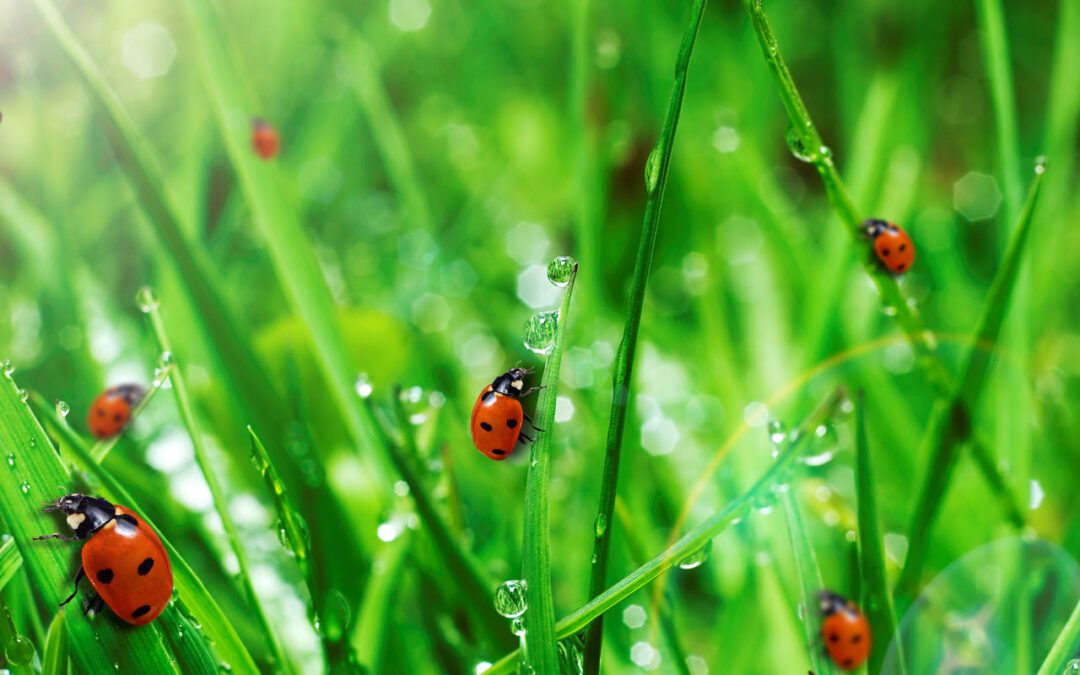

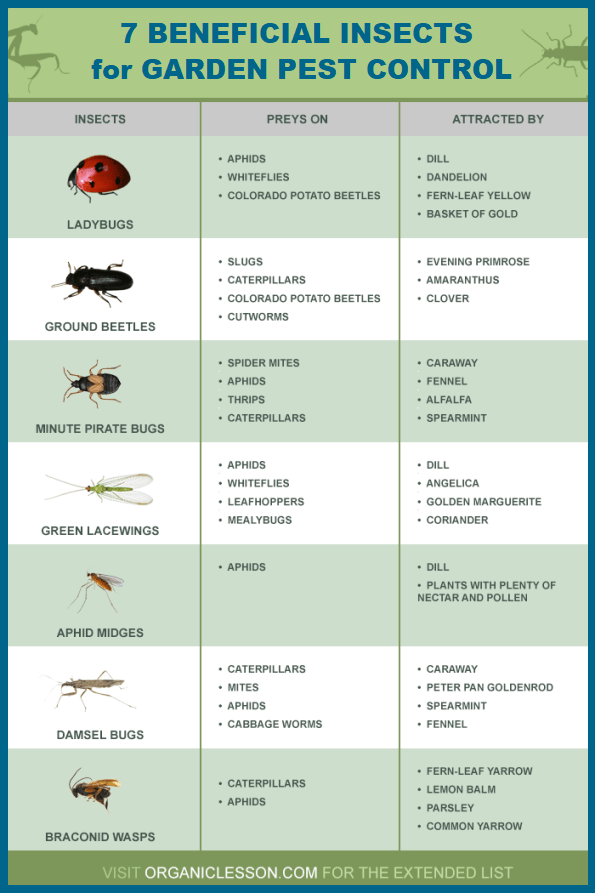
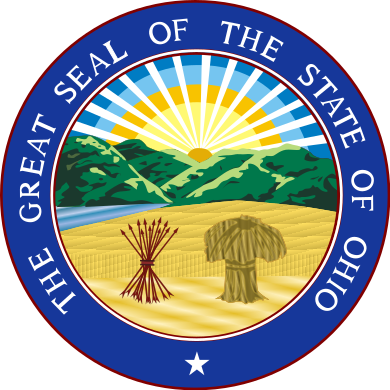
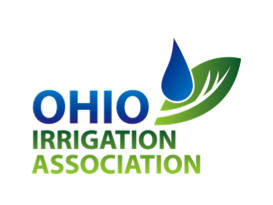


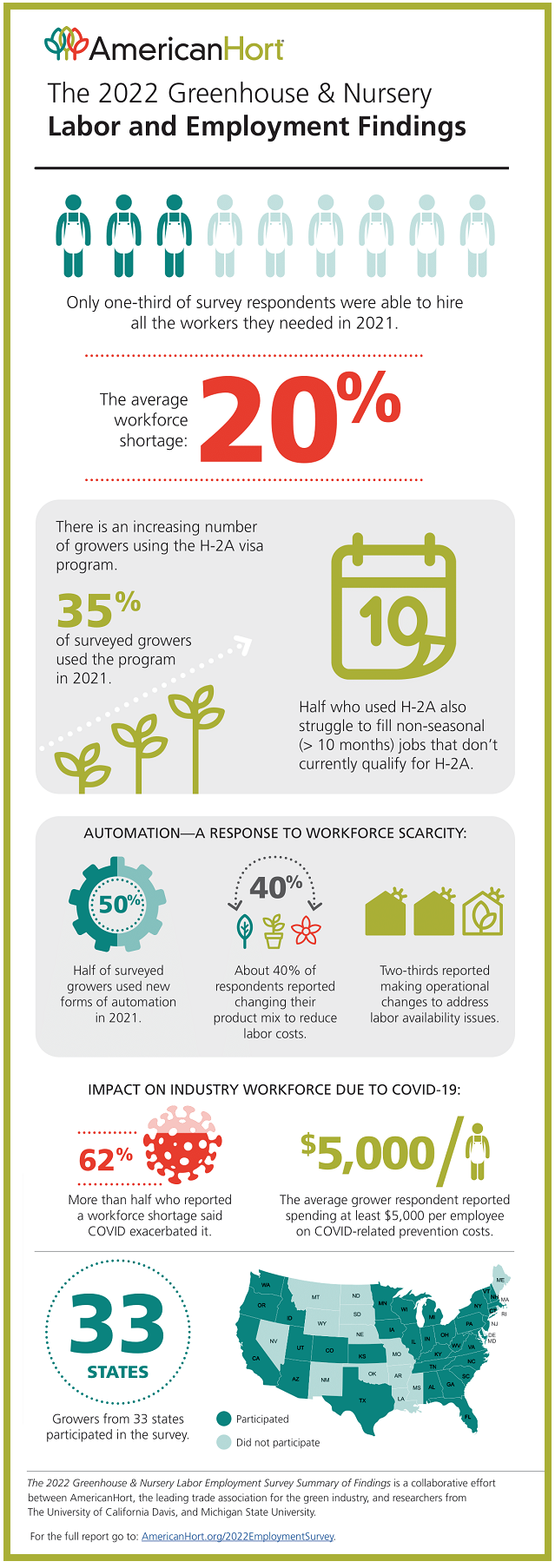

 How Much Should
How Much Should

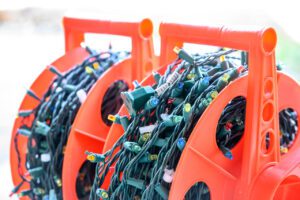 Storing Lights
Storing Lights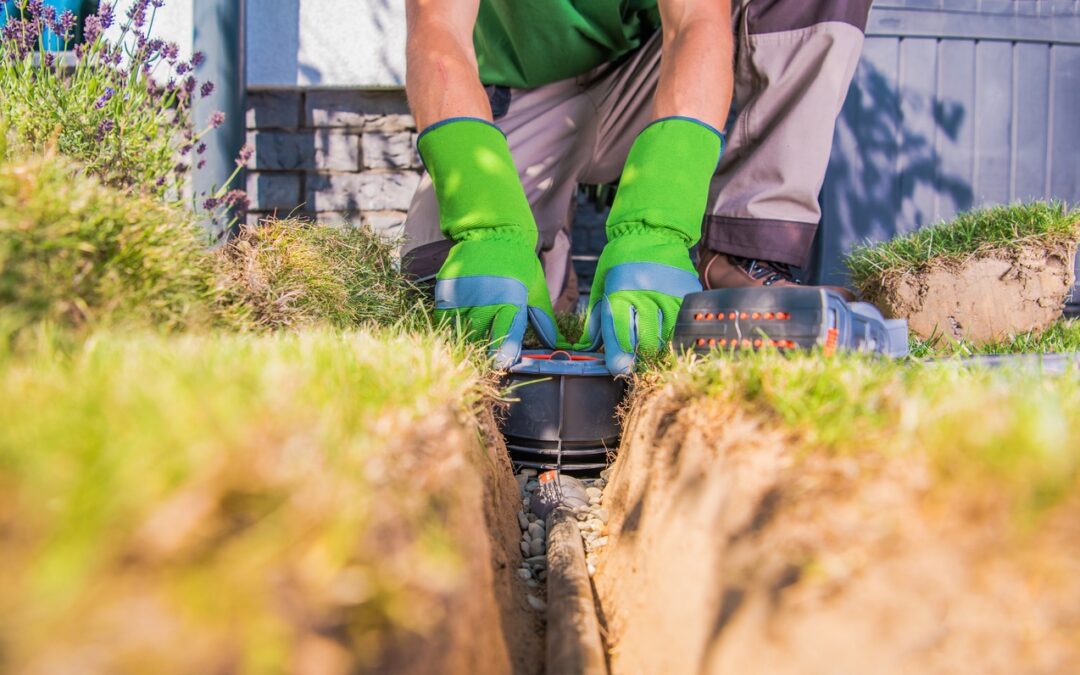


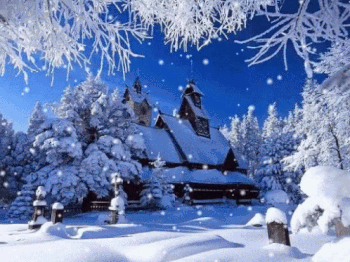



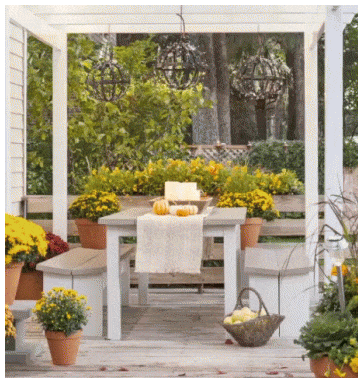
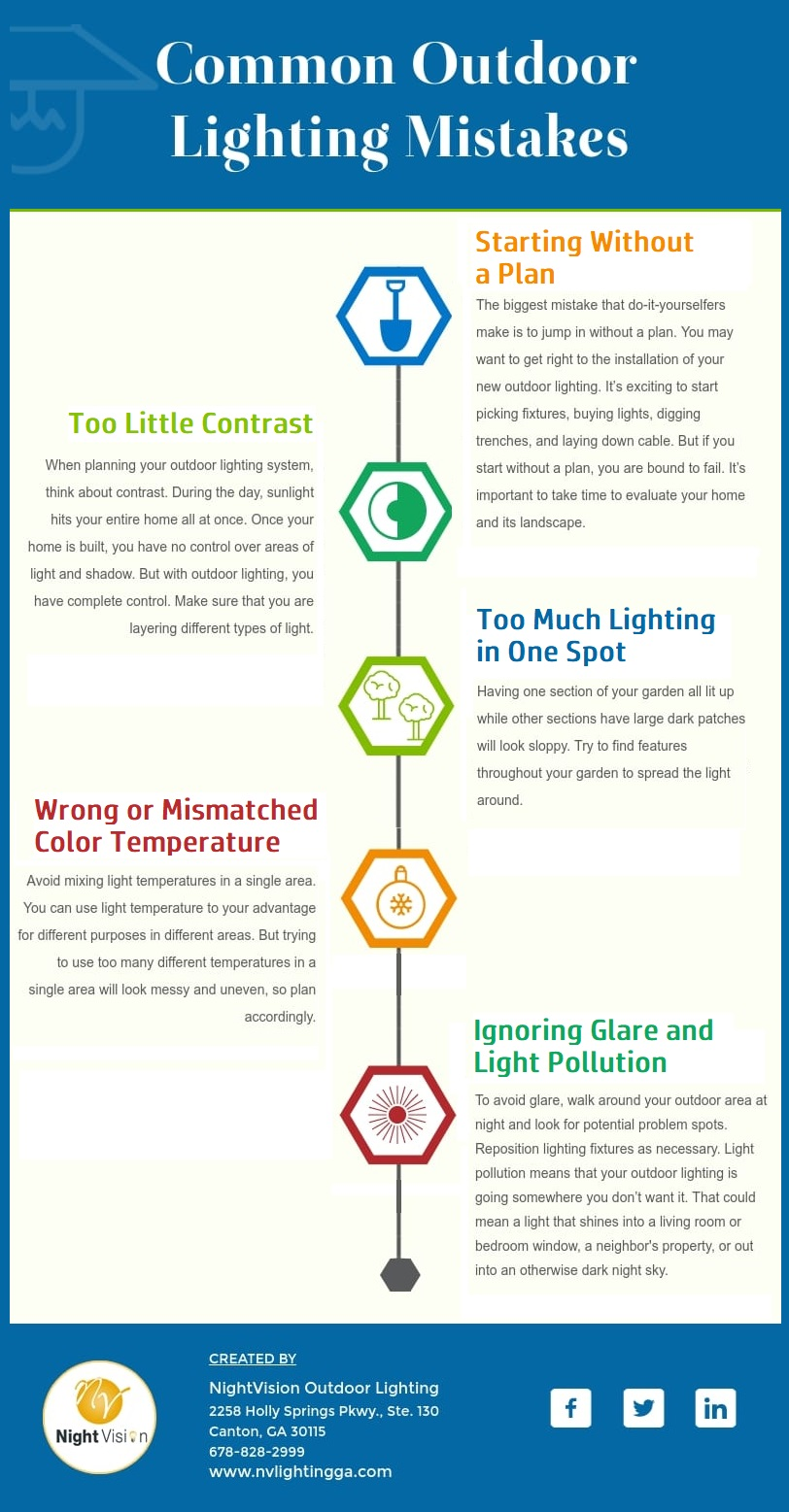


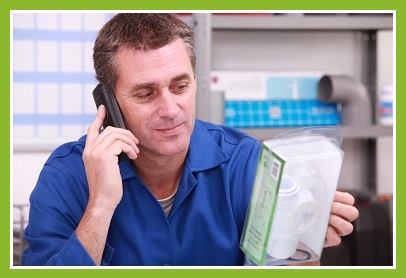 When Selecting
When Selecting


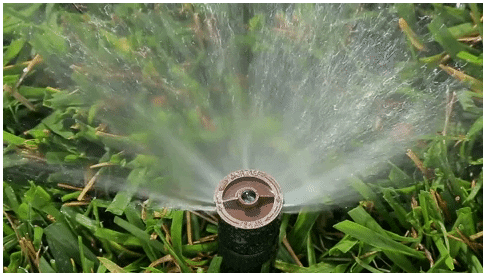
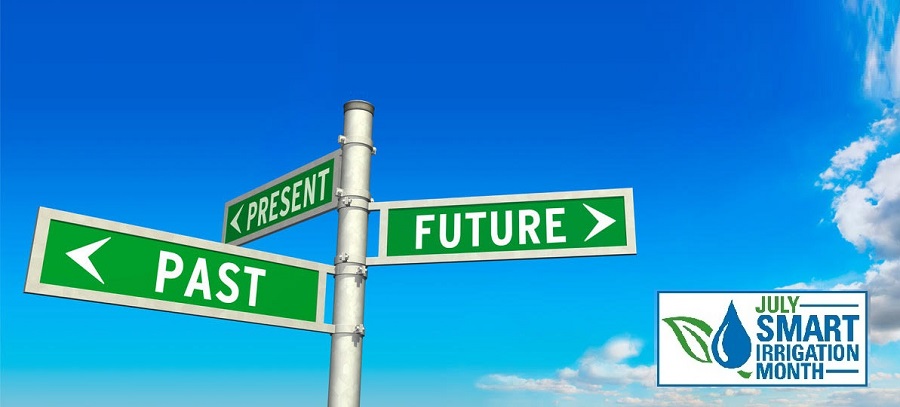
 Help Ohio Declare
Help Ohio Declare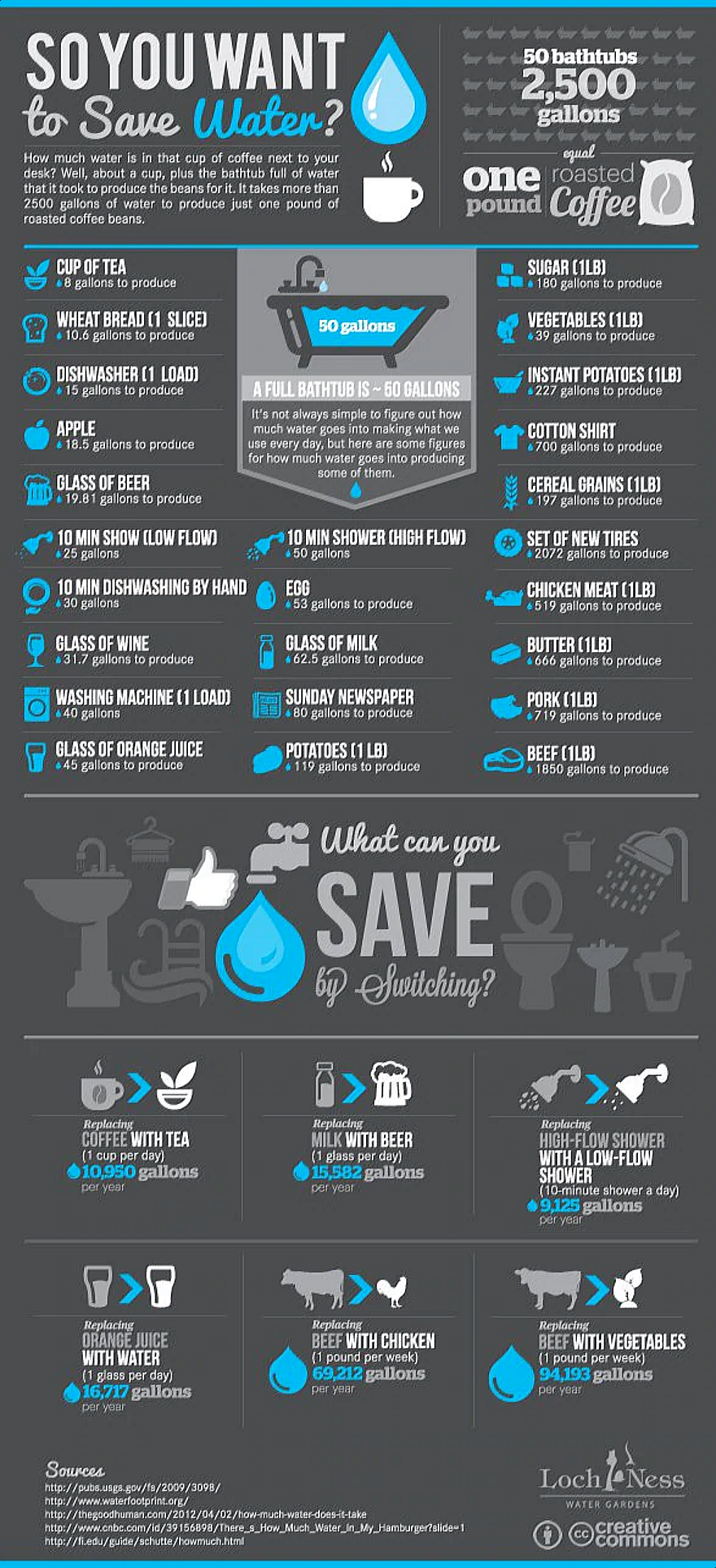
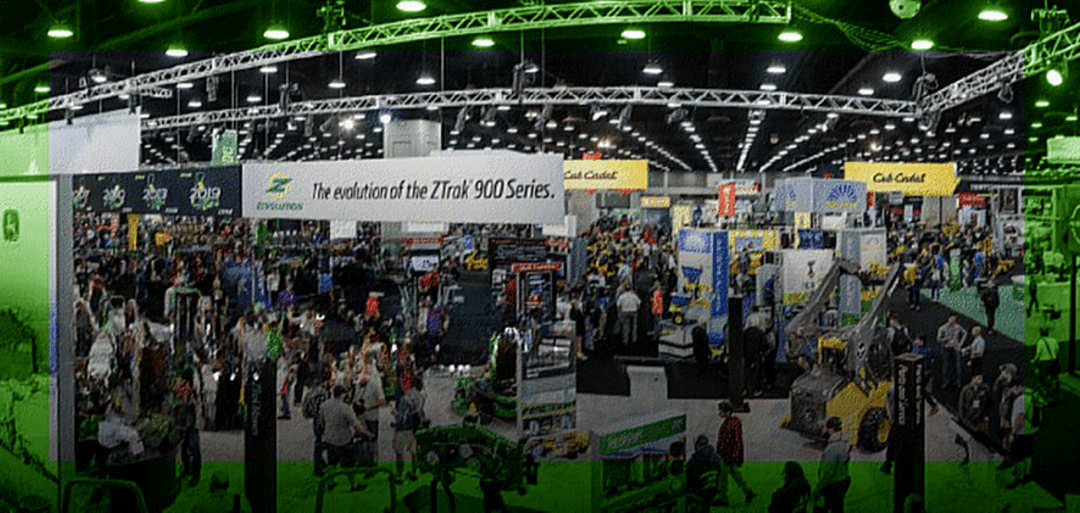
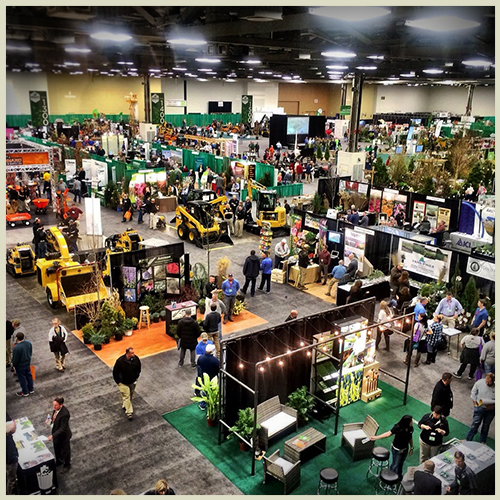







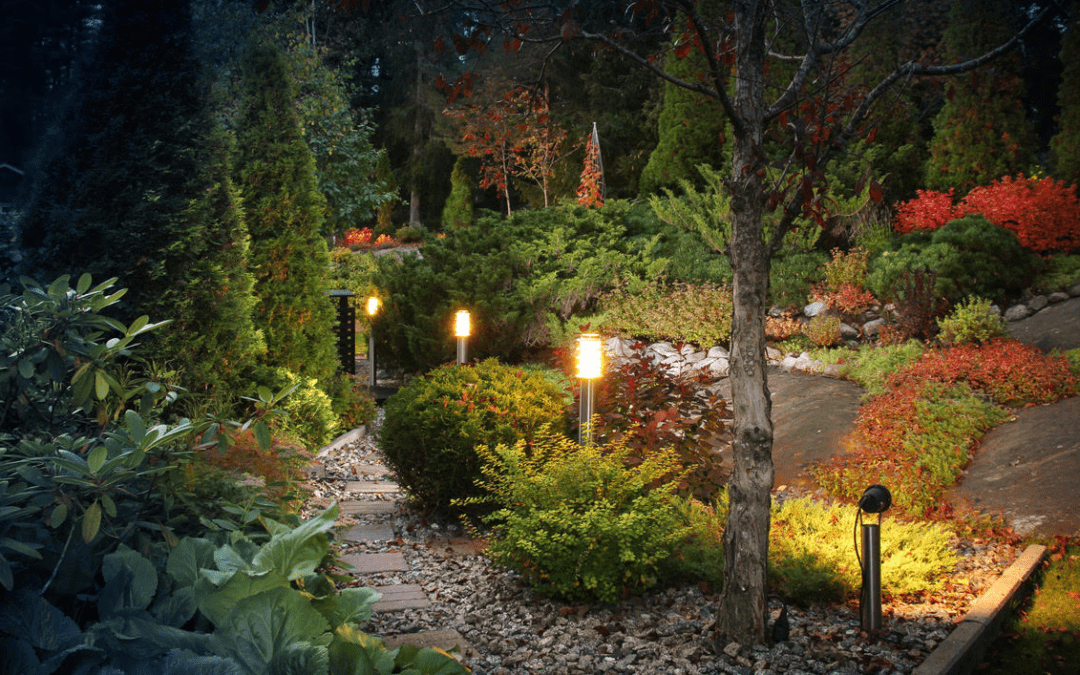
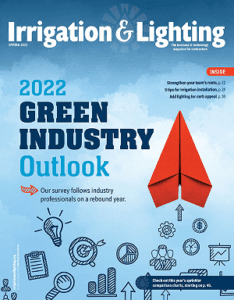
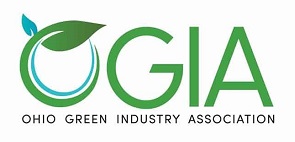 The Ohio Nursery & Landscape Association (ONLA) has changed its name to the
The Ohio Nursery & Landscape Association (ONLA) has changed its name to the 
